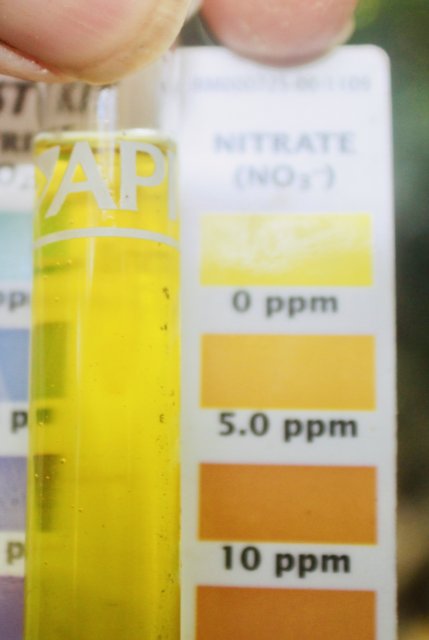For me its always seemed to to be the combination of negative factors added together that become most problematic, e.g.hard water, and lack of water changes together for soft water fish.
Once "one" of those negative factors is eliminated, such as when the water change schedule is increased (being the easiest to do), things often dramatically improve.
(Adding tannins also helped for me, especially if spawning was the goal.)
The problem with trying to ascertain cause, is that when placing a soft water fish in hard water, the negative effects take time to become symptomatic, are not immediately obvious, so are often misdiagnosed later on as an introduced pathogen, or parasite, because the chronic effects often take a couple years to cause visible damage.
Hard water fish are no exception when it come to the effects of a wimpy water change schedule.
I have been testing the natural waters in Panama lately, where my wild fish are coming from, the nitrate readings have so far been non-detectable.
And even in a small stream, flowing to small pools full of leaf litter, dotted with vulture feces, and only partially full because of the dry season, even there nitrate was undetectable.


Once "one" of those negative factors is eliminated, such as when the water change schedule is increased (being the easiest to do), things often dramatically improve.
(Adding tannins also helped for me, especially if spawning was the goal.)
The problem with trying to ascertain cause, is that when placing a soft water fish in hard water, the negative effects take time to become symptomatic, are not immediately obvious, so are often misdiagnosed later on as an introduced pathogen, or parasite, because the chronic effects often take a couple years to cause visible damage.
Hard water fish are no exception when it come to the effects of a wimpy water change schedule.
I have been testing the natural waters in Panama lately, where my wild fish are coming from, the nitrate readings have so far been non-detectable.
And even in a small stream, flowing to small pools full of leaf litter, dotted with vulture feces, and only partially full because of the dry season, even there nitrate was undetectable.




